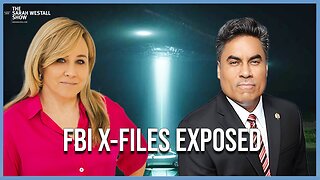Premium Only Content

countdown-to-rocket-launching
Certainly! Launching a space shuttle was a complex and meticulously planned process. Here's a brief description of a space shuttle launch:
1. **Pre-launch Preparations**: Before the launch, the shuttle, its solid rocket boosters, and the external fuel tank are assembled on the Mobile Launch Platform. The platform then moves to the launch pad on a massive crawler-transporter.
2. **Final Countdown**: Hours before the launch, the astronauts board the shuttle. The launch control team at the Kennedy Space Center checks and rechecks all systems. This is a methodical process with scheduled holds for assessments.
3. **Ignition**: The Shuttle Main Engines (three of them located at the rear of the shuttle) ignite first, followed milliseconds later by the ignition of the two Solid Rocket Boosters (SRBs) on either side of the external fuel tank. Once the SRBs ignite, the shuttle is committed to launch because they cannot be turned off once ignited.
4. **Liftoff**: With a combination of thrust from its main engines and the SRBs, the shuttle lifts off from the launch pad.
5. **SRB Separation**: About two minutes into the flight, after the SRBs have expended their fuel, they are jettisoned and fall back to Earth, where they are recovered and refurbished for reuse in future launches.
6. **External Tank Separation**: About eight minutes into the flight, once the shuttle reaches the edge of space, the main engines are shut down, and the large external fuel tank (which by now is empty) is jettisoned. It burns up upon reentry into the Earth's atmosphere.
7. **Orbit Insertion**: With assistance from its Orbital Maneuvering System (OMS) engines, the shuttle adjusts its trajectory and speed to achieve its desired orbit.
8. **In Orbit**: Once in its designated orbit, the shuttle can deploy satellites, repair them, or dock with the International Space Station (ISS). The shuttle was unique in its ability to carry large payloads both to and from space.
9. **Return & Landing**: After its mission is complete, the shuttle reenters the Earth's atmosphere. Using its heat-resistant tiles to protect it from the intense heat of reentry, the shuttle glides (unpowered) to a landing at a runway, much like an airplane. This made the shuttle the first reusable spacecraft.
Throughout its history, the U.S. Space Shuttle program saw 135 missions flown by five operational shuttles: Columbia, Challenger, Discovery, Atlantis, and Endeavour. Sadly, two of these missions ended in tragedy: Challenger in 1986 and Columbia in 2003, leading to significant changes in the program's safety and design. The shuttle program officially ended in 2011 after 30 years of operation.
-
 1:52:42
1:52:42
Kim Iversen
8 hours ago💰 CHA-CHING! 💰 Trump Unveils Big Money Plans For Gaza AND America
47.8K111 -
 1:05:28
1:05:28
Flyover Conservatives
20 hours agoUkraine’s Dirty Secret: The Christian Persecution No One Wants to Talk About - Alex Newman | FOC Show
42K17 -
 2:00:20
2:00:20
Glenn Greenwald
12 hours agoThe View from Moscow: Key Russian Analyst Aleksandr Dugin on Trump, Ukraine, Russia, and Globalism | SYSTEM UPDATE #414
113K59 -
 1:10:55
1:10:55
Donald Trump Jr.
10 hours agoBREAKING NEWS: My Father Revokes Biden-Maduro Oil License, LIVE with Maria Corina Machado | Triggered Ep.220
191K195 -
 1:25:29
1:25:29
Sarah Westall
8 hours agoX-Files True History, Project Blue Beam, Cabal Faction War w/ Former FBI Agent John DeSouza
76.4K15 -
 7:03:49
7:03:49
Dr Disrespect
15 hours ago🔴LIVE - DR DISRESPECT - NEW PC VS. DELTA FORCE - MAX SETTINGS
163K27 -
 49:04
49:04
Lights, Camera, Barstool
1 day agoIs The Monkey The Worst Movie Of The Year?? + Amazon Gets Bond
69.9K4 -
 24:19
24:19
Adam Carolla
1 day agoDiddy’s Legal Drama Escalates, Smuggler Caught Hiding WHAT? + Philly Eagles & The White House #news
116K19 -
 10:12
10:12
Mike Rowe
2 days agoClint Hill: What A Man. What A Life. | The Way I Heard It with Mike Rowe
120K17 -
 1:31:52
1:31:52
Redacted News
11 hours agoBOMBSHELL! This is war! FBI whistleblowers reveal Epstein files being destroyed? | Redacted News
190K368